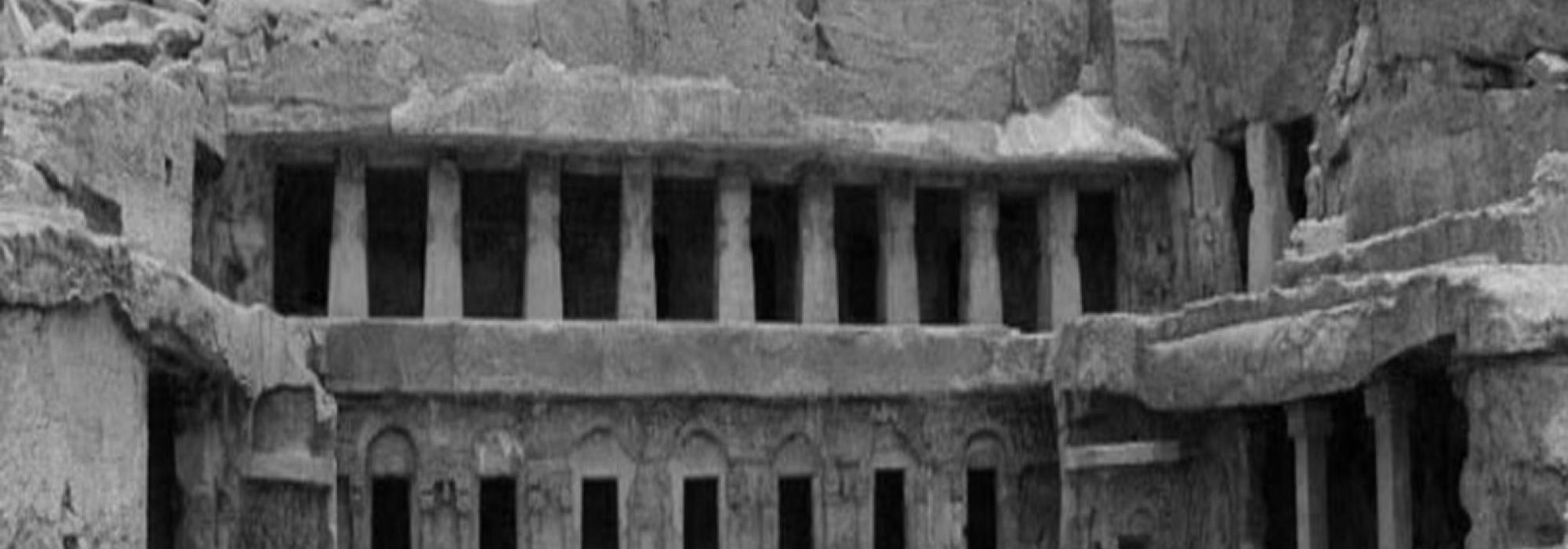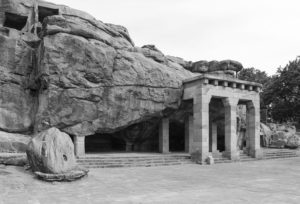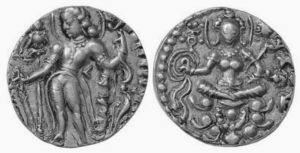In this discourse about the tradition of kṣātra in India, at every step, the storyline goes up and down, backwards and forward. It is my desire that all the important aspects must be covered in an informal yet succinct and rigorous manner. Consequently as we have observed so far, there have been several lineages of kings. Here I refer only to the great milestones of our history and tradition of kṣātra. So much more has to be said, going further back into the past and moving forward too. For instance, while introducing our tradition of kṣātra we started out with the North Indian Magadha Empire. Then we saw a few aspects of the Shungas. But we didn’t have a chance to look into the Kanvas. Similarly, in Southern India, there were three Indras – ‘Mūvendirar;’ this is a reference to the three kings (and lineages) in Tamil literature – the Pandyas, Cholas, and Cheras. Although there is a lot of historical material about them, we have not yet had the chance to discuss about them. The Pandyas, Cholas, and Cheras were firm adherents of the Vedic culture and were great luminaries of sanātanadharma. Their antiquity is well-known throughout history. There is a reference to the Pandyas even in the Mahābhārata. We can guess that these Mūvendirar nourished our culture starting about two or three thousand years ago. We can say without doubt that their kingdoms attained stability at least since the Mauryan Era. Thus the Vedic tradition and brilliance of kṣātra of the Drāviḍadeśa (Tamil Nadu) have made their mark on our minds. We can give thousands of examples for this from Sangam literature. Starting from the Common Era, we find several kingdoms ruling over the region of Karnataka, be it the Banas, the Kalabhras, the Kadambas, or the Eastern Rashtrakutas. The Andhra kingdoms are extremely famous. A few names we can recall at once are the Vishnukundinas, Andhrabhrtyas and the Reddirajas. We also have in Karnataka the Chutus, Alupas of Karavali, Nolamba of the upper ghats. Thus we see several valorous lineages.
Although he belonged to the Jaina dharma, renowned for its tradition of non-violence, King Kharavela of Kalinga earned fame as a great warrior and adhered by the great principles of kṣātra; we have yet to learn about him. He was an ancient ruler and someone we should all be proud of. The greatest evidence about King Kharavela is the Hathigumpha inscription. It is situated in the Udayagiri caves near Bhubaneshwar, Odisha’s capital city. Kharavela was the emperor of Kalinga and he went around on a digvijaya (literally, ‘winning over the directions’); he even faced the Mauryas. He also fought against the Shatavahanas; he defeated a few South Indian kings, in Tamil Nadu. He even defeated the Shatavahana king Shatakarni and earned fame. Kharavela’s valour was such that even the Greeks living in Bactria were afraid of him. Kharavela, who had confronted the Magadha emperor on the banks of the Ganga, came all the way south to the Krishna-Kaveri rivers. In sum, whatever could be achieved in Southeast India, he achieved all that. He ensured the welfare of his subjects and worked towards the larger good. A trained musician, Kharavela also had an abiding interest in dance. He promoted irrigation and agriculture well. One of the interesting features of his inscription that we have alluded to earlier is that we find entries of all that he achieved year after year. It is a lengthy inscription written in Prakrit. A small portion of it has also been lost. He also built several Jaina and sanātanadharma temples. He promoted the Vedic way of life, he encouraged Sanātanadharma, and himself performed many Vedic yajñas. He was free from obsession for his chosen school of thought (i.e. Jainism). He brought about the kind of stability in India that earlier kings of the Nanda dynasty (like Mahapadmananda) had achieved. Kharavela, who belonged to the Mahameghavahana lineage, was an early and splendid representative of our tradition’s brāhma-kṣātra balance; akin to some of his peers, he continues to dwell in our memory and is indeed an inspiration for us.
In the course of this series of discourse, our attempt is not to give a summary of the entire history of the kṣātra tradition of India. It is merely to identify and recall some of the milestones. We have tried to provide a means to understand the resplendent history of our country in light of truth and with the holistic Bhāratīya vision. Not limited merely to the providing of the facts about various incidents of the past, the present work is an honest attempt to understand the value system and the temperament of the great heroes who participated in these incidents and overcame challenges with fortitude. The primary focus of this study has been to closely follow the tradition of kṣātra in India, with its crests and troughs. In this process, it is inevitable that we rely only on documented evidence that has proven the heroism of the great warriors and kings of the past. Even here, we are bound to give the highest honour to those kings who faced the greatest number of challenges, punished the wicked and protected the good in a grand manner, and shone both in times of war and peace. This is, however, not to demean the achievements or sacrifices of the other greats who have not be referred to. It is said that Mandhata adorned the Kritayuga. However, owing to the fact that a great poet like Valmiki has not recorded his life, today he remains just a name to us. And even when a character who has been recorded by Valmiki in his epic (there are questions surrounding this; for now we shall leave the differences in opinions aside) like Urmila, the story of her life has not been told in detail. Indeed, her chastity and goodness in character must have been akin to Sita. However, she did not face any of the great difficulties that Sita faced in her life; and even if she did, Valmiki has not recorded it. Therefore, it is inevitable that we recall more of Rama and Sita, speak about their accomplishments, and draw inspiration from them. On the other hand, this does not amount to disrespect to either Mandhata or Urmila. Among the several royal lineages in our country’s history, we discuss the history of only a few families or dynasties. The reason is simply that they faced greater challenges and their qualities were of a much higher standard than the others.
Dynasties like the Chutus, Nolambas, Kalachuryas, Punnadas, Banas, Sendrakas, or others do not find a place in our history in such detail like that of a single Chalukya dynasty, or a Rashtrakuta, or a Vijayanagara. It is rather unfortunate that we have little or no details about small-time royal lineages and families that ruled a small territory for a long time. We find some references about these dynasties in the piecemeal details found in some inscriptions that have remained as but ruins; apart from this, neither do we have treatises nor works of kāvya that can throw light on these forgotten lineages and we are resigned to our fate. We need not complain that everyone has chased after the great kings and the successful warriors. If a plant falls on the ground, broken due to a forceful wind, no creature would die under the impact of it falling down; even an ant would survive it. But if a great tree were to fall on the ground and roll down, tens of large creatures and hundreds of smaller creatures will get destroyed. If the earth itself were to shake with tremors, then all the people inhabiting the region of the quake will die. But if a rock were to tremble, no great accident will arise out of it. Of course, this doesn’t mean that we are claiming that only the joys and sorrows of the great ones are truly great. There is a certain quality in quantity too. We’re merely underscoring the fact that it is only that which comes to our notice in an emphatic manner that becomes a subject of our awareness and examination.
These days there is a great clamour in literature that we must keep at the forefront of our study the common person. We must remember that the world proceeds only by keeping the best and the greatest at the forefront, at the core of its focus. For example, if we take our solar system, it is due to the greatness of the sun that the earth and all other planets orbit around it. This is the eternal way of the world indeed. Looking at this, one need not get angered or dejected in vain. Even if we consider a contemporary example of a newspaper, we find that in great part, it is dedicated to the news of political leaders; and along with them, movie stars, athletes and sports-persons, poets and artists, scientists and engineers, economists and business leaders. Apart from these people, who is given prominence? The status of a society is determined by a minister’s goodness or vileness. Therefore we must look upon these as exalted existence (vibhūti) and sharpen our objective view. To the extent possible, we should look for the sattva that exists even in the insignificant.
At other times, even though the background and situation might be humble the actions and achievements might be of a high order. At that point in time, the society is bound to take a look at such a person too. For example, King Chhatrasal of Bundelkhand doesn’t represent a great milestone in the history of India but he made a name by his remarkable achievements on the battlefield. Similarly, Queen Durgavati of Gondvala stands apart by her matchless feats. Even though not an extraordinary dynasty, the Wodeyars of Mysore ruled over Karnataka for a long time and attained the respect of the people and among them, Ranadhira Kantheerava Narasimharaja Wodeyar stands out due to his valour. Chennamaji of Bidanur was one such braveheart who even gave refuge to the son of the great Shivaji. Thus we find several such individuals who have emerged from humble beginnings. We have to observe all this carefully and assiduously record them for posterity.
To be continued Translated by Hari Ravikumar and Sandeep Balakrishna



















































